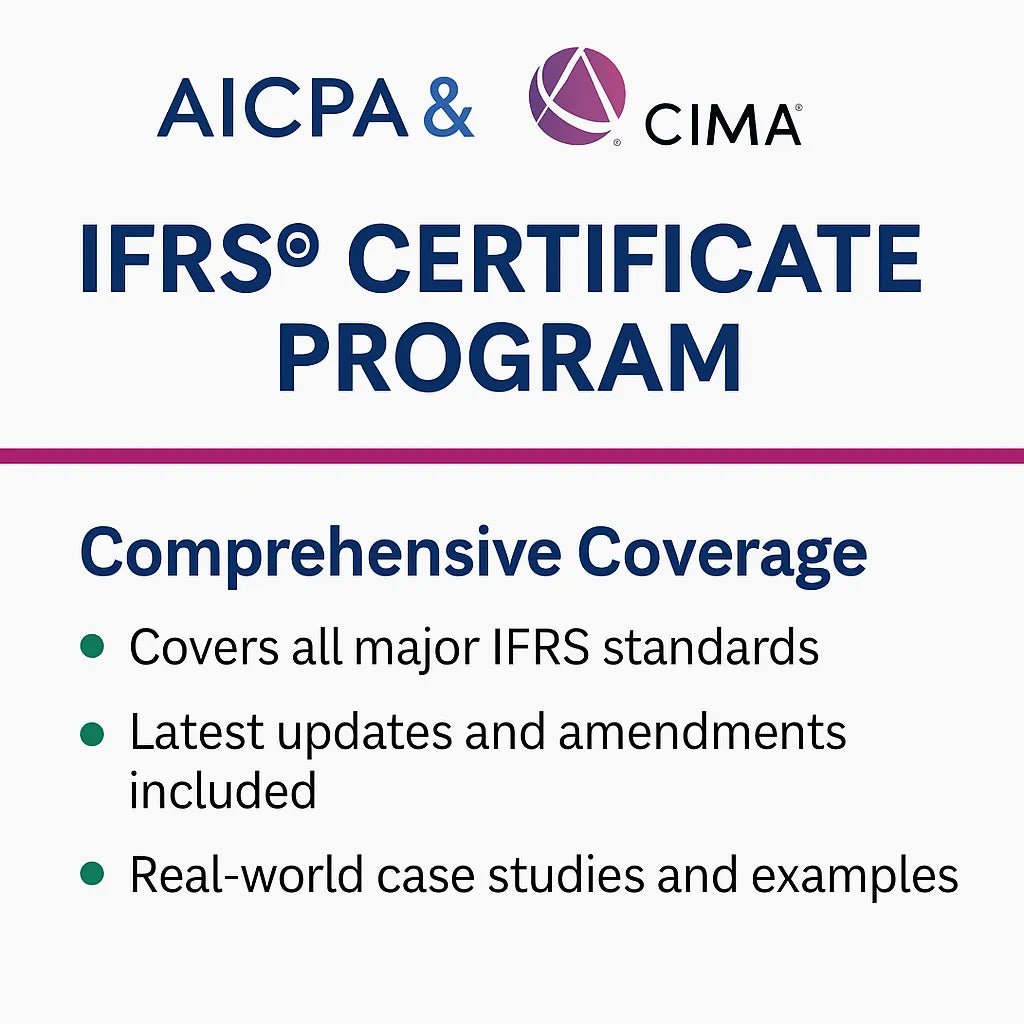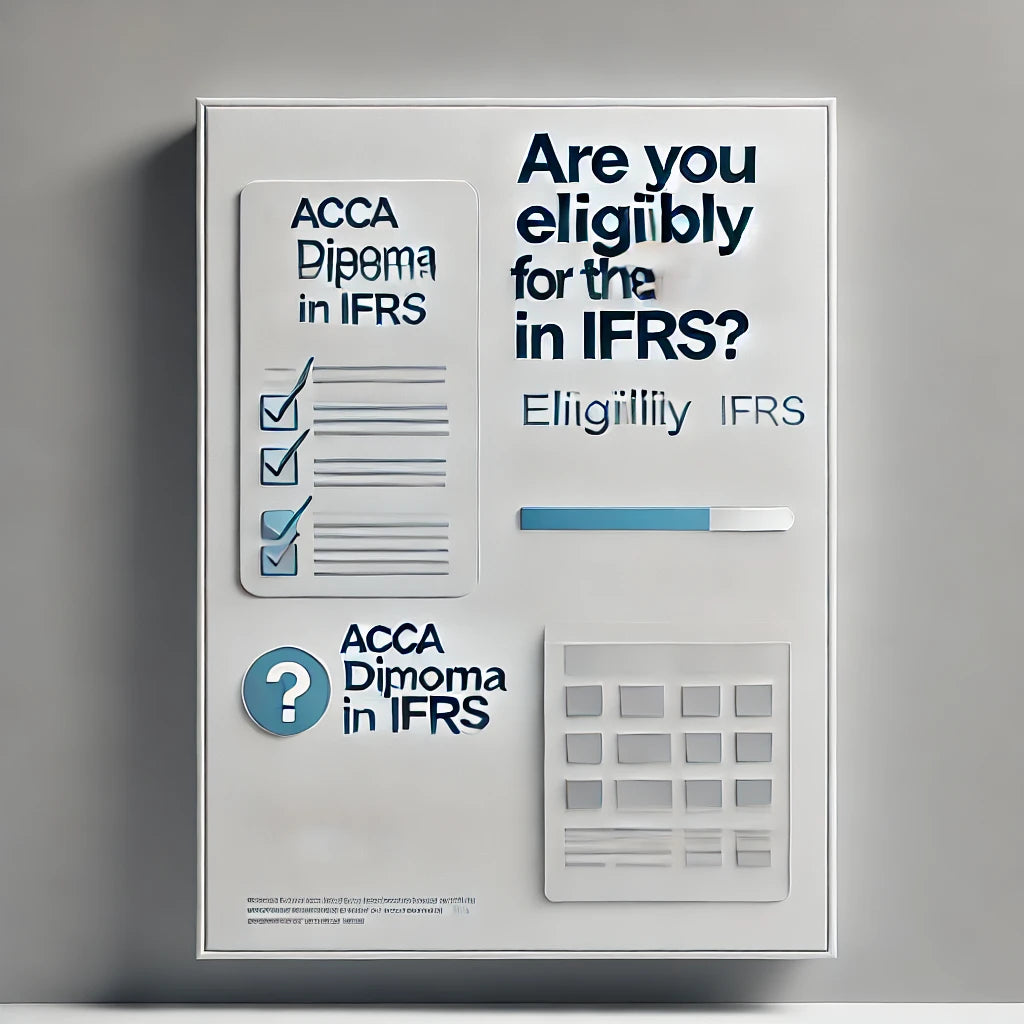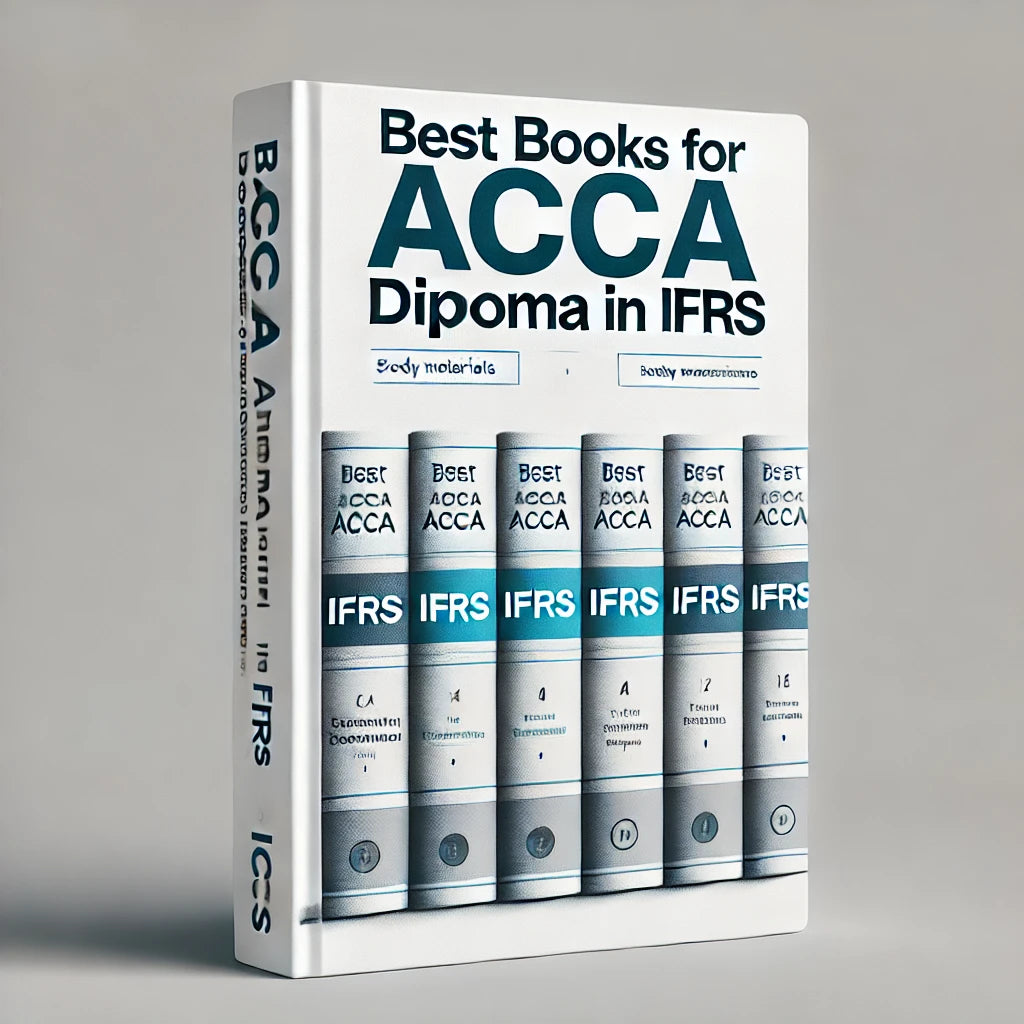Updated IFRS Standards List effective for year 2025
IFRS Standards list
International Financial Reporting Standards (IFRS) are rules for how companies report their financial statements. Updated regularly, these standards provide a framework for companies to adhere to when preparing their financials. As of 2024, a list of updated IFRS standards is in effect. This blog post will cover the latest updates and what they mean for finance professionals.
As of 2025, there 23 active IAS standards and 16 active IFRS standards
Other popular IFRS blogs
- Best IFRS certification programs in the world
- IFRS interview questions
- Scope of IFRS
- IFRS convergence with US GAAP
- IFRS Salary in India
Difference between IAS and IFRS
Watch a video explanation by our experts
International Financial Reporting Standards (IFRS) and International Accounting Standards (IAS) are both sets of accounting standards developed by the International Accounting Standards Board (IASB). The IASB is an independent organization that develops and publishes financial reporting standards that organizations worldwide use to prepare their financial statements.
The International Accounting Standards (IAS) were developed by the International Accounting Standards Committee (IASC), established in 1973. The IASC was a private sector body responsible for developing and issuing international accounting standards.
In 2001, the IASC was replaced by the International Accounting Standards Board (IASB). The IASB is an independent organization created to develop and publish financial reporting standards that organizations worldwide use to prepare their financial statements. The IASB is funded by the accounting profession and operates under the International Federation of Accountants (IFAC) oversight.
The IASB adopted the name International Financial Reporting Standards (IFRS) for the standards that it develops and issues. As a result, the IFRS have replaced some outdated IAS.
The main reason for the switch from IAS to IFRS was to improve the quality and consistency of financial reporting worldwide. The IFRS are designed to be more principles-based than the IAS, which means that they provide more guidance on the underlying principles that should be followed in preparing financial statements, rather than specifying specific rules for every possible situation. This makes the IFRS more flexible and adaptable to different business situations, and helps to ensure that financial statements are prepared in a way that reflects the underlying economic substance of transactions.
IFRS Eligibility Got You Confused? Here's What You Need to Know About ACCA Diploma
IFRS standards List
IAS Standards
- IAS 1 Presentation of Financial Statements: Overall requirements for the presentation of financial statements, including the structure, content, and minimum requirements for the presentation of balance sheets, income statements, and statements of cash flows. Issued 2007
- IAS 2 Inventories : Principles for the determination of the cost of inventories and the subsequent recognition of an expense, including the cost formula to be used, the treatment of abnormal amounts of waste, and the treatment of inventories that are expected to be sold, consumed, or converted into a different form. Issued 2005
- IAS 7 Statement of Cash Flows: Requirements for presenting a statement of cash flows, which provides information about a company's cash inflows and outflows during a period. Issued 1992
- IAS 8 Accounting Policies, Changes in Accounting Estimates and Errors: Principles for selecting and applying accounting policies and the requirements for disclosing changes in accounting policies and estimates. It also guides the correction of errors. Issued 2003
- IAS 10 Events After the Reporting Period: This standard deals with the accounting treatment of events occurring after the reporting period's end but before the financial statements are authorized for issue. It specifies the circumstances in which such events should be recognized in the financial statements. Issued 2003
- IAS 12 Income Taxes: This standard sets out the accounting treatment for income taxes, including the recognition of current and deferred tax assets and liabilities, and the determination of the tax expense for the period. Issued 1996
- IAS 16 Property, Plant and Equipment: This standard sets out the accounting treatment for property, plant, and equipment, including the recognition and measurement of such assets, the determination of their useful lives, and the depreciation of their carrying amounts. Issued 2003
- IAS 19 Employee Benefits: This standard sets out the accounting treatment for employee benefits, including the recognition and measurement of defined benefit plans, contribution plans, and other employee benefits. Issued 2011
- IAS 20 Accounting for Government Grants and Disclosure of Government Assistance: This standard sets out the accounting treatment for government grants and other forms of government assistance, including recognising such grants and measuring their impact on the financial statements. Issued 1983
- IAS 21 The Effects of Changes in Foreign Exchange Rates: This standard sets out the accounting treatment for transactions and balances denominated in a foreign currency, including recognising exchange differences and translating financial statements into a different presentation currency.Issued 2003
- IAS 23 Borrowing Costs: This standard sets out the accounting treatment for borrowing costs, including recognising and measuring such costs and allocating borrowing costs to qualifying assets. Issued 2007
- IAS 24 Related Party Disclosures: This standard sets out the requirements for disclosing related party transactions and relationships in the financial statements. Issued 2009
- IAS 28 Investments in Associates: This standard sets out the accounting treatment for investments in associates, including the recognition and measurement of such investments and the determination of the profit or loss. Issued 2011
- IAS 29 Financial Reporting in Hyperinflationary Economies: This standard sets out the accounting treatment for entities operating in economies with hyperinflation, including the requirements for measuring and presenting financial statements in such circumstances. Issued 1989
- IAS 32 Financial Instruments Presentation: This standard sets out the requirements for the presentation of financial instruments in the financial statements, including the classification and measurement of financial instruments, the presentation of gains and losses on financial instruments, and the disclosure of information about financial instruments. Issued 2003
- IAS 33 Earnings per Share: This standard sets out the requirements for presenting and calculating earnings per share (EPS) in the financial statements. It guides how to calculate both basic and diluted EPS and the required disclosures related to EPS. Issued 2003
- IAS 34 Interim Financial Reporting: This standard sets out the requirements for preparing and presenting interim financial reports, which are financial statements covering less than one year. Issued 1998
- IAS 36 Impairment of Assets: This standard sets out the requirements for recognising and measuring impairments of assets, including determining the recoverable amount of an asset and recognising an impairment loss. Issued 2004
- IAS 37 Provisions, Contingent Liabilities and Contingent Assets: This standard sets out the accounting treatment for provisions, which are liabilities of uncertain timing or amount, and contingent liabilities, which are possible obligations that may or may not be recognized as liabilities. It also sets out the accounting treatment for contingent assets, which are possible assets that may or may not be recognized as assets. Issued 1998
- IAS 38 Intangible Assets: This standard sets out the accounting treatment for intangible assets, including the recognition and measurement of such assets, the determination of their useful lives, and the amortization of their carrying amounts. Issued 2004
- IAS 40 Investment Property: This standard sets out the accounting treatment for investment property, which is property held to earn rentals or for capital appreciation, or both, rather than for use in the production or supply of goods or services. Issued 2003
- IAS 41 Agriculture: This standard sets out the accounting treatment for agricultural activity, including the recognition and measurement of biological assets and agricultural produce. Issued 2001.
IFRS Diploma: From Zero to Hero in Just a Few Steps
IFRS Standards
- IFRS 1 First-time Adoption of International Financial Reporting Standards: This standard sets out the requirements for an entity that is preparing its financial statements for the first time using IFRS. It provides guidance on recognising and measuring assets, liabilities, equity, income, and expenses at the date of transition to IFRS. Issued 2008
- IFRS 2 Share-based Payment: This standard sets out the accounting treatment for share-based payment transactions, including the recognition and measurement of equity-settled and cash-settled share-based payment transactions. Issued 2004
- IFRS 3 Business Combinations: This standard sets out the accounting treatment for business combinations, including the recognition and measurement of the assets and liabilities acquired, the determination of the consideration transferred, and the recognition of goodwill or a gain on a bargain purchase. Issued 2008
- IFRS 5 Non-current Assets Held for Sale and Discontinued Operations: This standard sets out the accounting treatment for non-current assets held for sale and discontinued operations, including the recognition and measurement of such assets and the presentation of the results of discontinued operations in the financial statements. Issued 2004
- IFRS 6 Exploration for and Evaluation of Mineral Resources: This standard sets out the accounting treatment for exploration and evaluation activities in the mining and oil and gas industries, including the recognition and measurement of exploration and evaluation assets and the recognition of exploration and evaluation expenditure. Issued 2004
- IFRS 7 Financial Instruments: Disclosures: This standard sets out the disclosure requirements for financial instruments, including information about the nature and extent of risks arising from financial instruments and the extent to which the entity manages those risks. Issued 2005
- IFRS 8 Operating Segments: This standard sets out the requirements for the disclosure of information about an entity's operating segments, including the identification of operating segments, the measurement of segment profit or loss, and the disclosure of segment assets and liabilities. Issued 2006.
- IFRS 9 Financial Instruments: This standard sets out the requirements for the recognition and measurement of financial instruments, including the classification and measurement of financial assets and liabilities, the impairment of financial assets, and the hedge accounting of financial instruments. Issued 2014
- IFRS 10 Consolidated Financial Statements: This standard sets out the principles for preparing and presenting consolidated financial statements for a group of entities under the control of a parent company. It replaces IAS 27 Consolidated and Separate Financial Statements. Issued 2011
- IFRS 11 Joint Arrangements: This standard sets out the accounting treatment for joint arrangements, in which two or more parties have joint control. It specifies the criteria for determining whether an arrangement is a joint venture or a joint operation, and the accounting treatment for each type of joint arrangement. Issued 2011
- IFRS 12 Disclosure of Interests in Other Entities: This standard sets out the disclosure requirements for interests in other entities, including information about the entity's nature, the risks associated with the entity, and the entity's financial position and performance. Issued 2011
- IFRS 13 Fair Value Measurement: This standard sets out the principles for measuring fair value and the required disclosures about fair value measurements. It applies to the measurement of fair value in the context of IFRS, but not to determining fair value to establish the selling price in a transaction between willing parties. Issued 2011
- IFRS 14 Regulatory Deferral Accounts: This standard sets out the accounting treatment for regulatory deferral accounts, which are assets or liabilities that arise from recognising deferred income or expenses in the financial statements required by regulatory authorities.Issued 2014
- IFRS 15 Revenue from Contracts with Customers: IFRS 15 Revenue from Contracts with Customers: This standard sets out the principles for the recognition of revenue from contracts with customers, including the determination of the transaction price, the allocation of the transaction price to the performance obligations in the contract, and the recognition of revenue when (or as) the entity satisfies a performance obligation. It replaces IAS 11 Construction Contracts and IAS 18 Revenue. Issued 2014
- IFRS 16 Leases: This standard sets out the accounting treatment for leases, including lessees' recognition of lease assets and lease liabilities and the presentation of leased and leased liabilities on the balance sheet. It replaces IAS 17 Leases. Issued 2016
- IFRS 17 Insurance Contracts: This standard sets out the accounting treatment for insurance contracts, including the recognition of insurance contract assets and insurance contract liabilities, the measurement of insurance contract assets and insurance contract liabilities, and the presentation of the results of insurance contracts in the financial statements. It replaces IFRS 4 Insurance Contracts. Issued 2017
- IFRS 18: IFRS 18 Presentation and Disclosure in Financial Statements effective from Jan 1, 2027
- IFRS 19, effective January 1, 2027, establishes presentation and disclosure requirements for financial statements, ensuring transparency, consistency, and comparability across entities for enhanced stakeholder reliability.
Sustainability standards
In Jun 2023, the IFRS Foundation announced its first two sustainability standards issued by the Sustainability Standards Board (SSB). The SSB aims to address the need for consistent and comparable sustainability reporting by companies around the world.
The standards are
IFRS S1 General Requirements for Disclosure of Sustainability-related Financial Information
IFRS S2 Climate-related Disclosures
Summing up
Adhering to IFRS standards is mandatory for most companies globally. As a finance professional, it's important to keep abreast of the latest updates to these standards.
The 2025 update includes several key changes that will impact how companies report their financial statements. By enrolling in an IFRS certificate program, you can ensure that you're up-to-date on the latest rules and regulations. This will give you the confidence and expertise you need to properly advise your company on its financial reporting.















I need this documet for reference purpose
To keep up-to-date on IFRS.
Thanks this resources are very useful, still need to learn more from your,
Best regards
Leave a comment